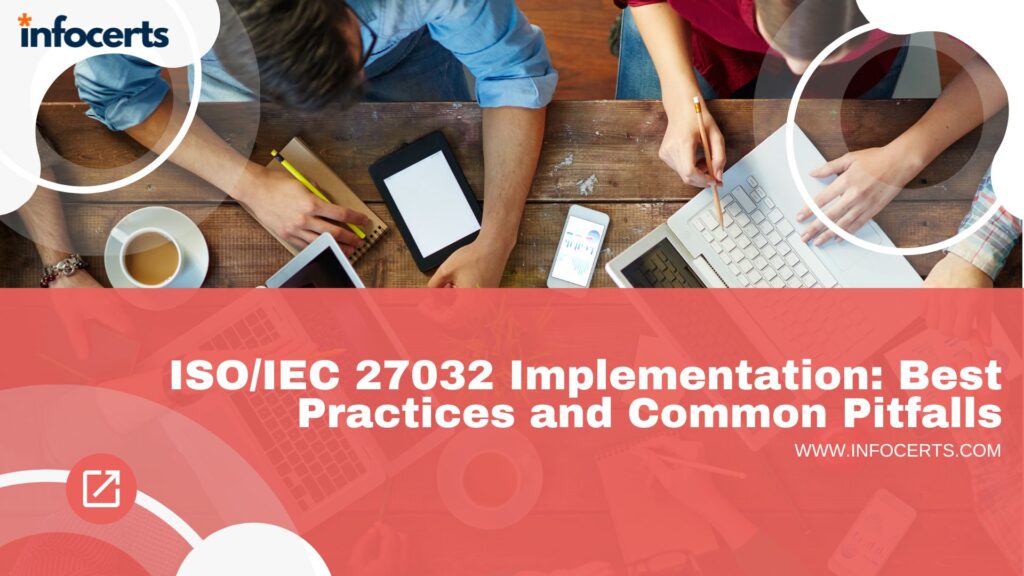Guidelines for Successfully Adopting the Cybersecurity Standard
Implementing ISO/IEC 27032 Implementation can significantly enhance your organization’s cybersecurity posture. This international standard provides a framework for improving your cybersecurity measures and protecting sensitive information from a variety of threats. Below, we outline essential steps, best practices, and common pitfalls to help guide your implementation journey.
Steps to Implement ISO/IEC 27032
- Initial Assessment and Gap Analysis
- Conduct a thorough assessment of your current cybersecurity practices.
- Identify gaps between existing policies and ISO/IEC 27032 requirements.
- Develop a roadmap to address these gaps and align with the standard’s guidelines.
- Developing and Executing a Cybersecurity Plan
- Create a comprehensive cybersecurity plan tailored to your organization’s needs.
- Implement security controls based on the identified gaps and planned improvements.
- Regularly review and update the plan to adapt to emerging threats and changes in the organization.
Best Practices for ISO/IEC 27032
- Regular Training and Awareness Programs
- Conduct regular training sessions to keep your team updated on cybersecurity best practices.
- Promote awareness about common threats and safe practices.
- Continuous Monitoring and Improvement
- Implement continuous monitoring systems to detect and respond to security incidents promptly.
- Review and refine your cybersecurity measures regularly to ensure ongoing effectiveness.
Common Pitfalls and How to Avoid Them
- Underestimating the Complexity of Implementation
- Understand that implementing ISO/IEC 27032 can be complex and time-consuming.
- Allocate sufficient resources and plan for a realistic timeline to ensure a successful implementation.
- Failing to Engage All Stakeholders
- Involve all relevant stakeholders in the implementation process to ensure their buy-in and support.
- Communicate clearly about the benefits and responsibilities associated with the new cybersecurity measures.
Scenario: A Retailer Implements ISO/IEC 27032
The Challenge:
A retailer faces the challenge of protecting customer data during online transactions. With increasing cyber threats, securing this sensitive information is crucial for maintaining customer trust.
Implementation Journey:
The retailer begins by conducting a gap analysis and develops a comprehensive cybersecurity plan. They face obstacles such as integrating new security measures with existing systems and ensuring all employees are trained. Overcoming these challenges involves continuous monitoring and adapting to new threats.
Outcome:
Through successful implementation of ISO/IEC 27032, the retailer enhances its security posture and achieves compliance. As a result, they gain improved protection for customer data and strengthened trust in their brand.
For IT professionals looking to deepen their understanding and gain certification in ISO/IEC 27032, ISMS, and GRC, our company offers specialized courses. Enroll today to advance your career and enhance your organization’s cybersecurity practices. Contact us at Infocerts at +91 70455 40400 for more details and enrollment information.
For more insights on implementing ISO/IEC 27032 and related cybersecurity standards, explore our resources on ISO/IEC 27032, ISMS, and GRC.
Implementing ISO/IEC 27032 effectively requires careful planning and execution. By following these guidelines and avoiding common pitfalls, your organization can strengthen its cybersecurity framework and better protect sensitive information.

